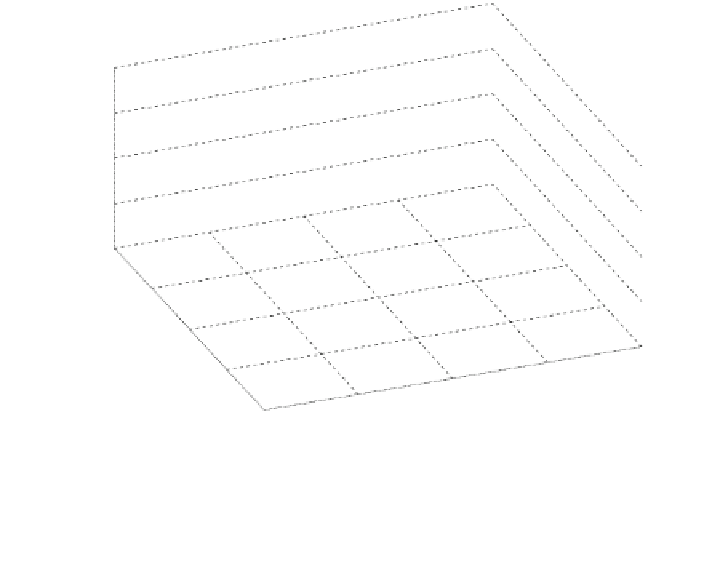Biomedical Engineering Reference
In-Depth Information
that the objective function has the minimum when c = 5, as the estimated class
number (ˆ) to 5. Now, we can make the clustering with the estimated class number
(ˆ = 5). Accordingly, for the clustering with 130 patientS datasets, we have made
a clustering with the feature combination vector (BRF, PCA, and MLE) and the
estimated class number (ˆ = 5). That means 130 patient datasets are placed into
five classes as shown in Fig.
5.4
. For the prediction process, each class has pre-
diction parameters, i.e., the optimal neuron number for RMLP based on Fisher
Linear Discriminant (explained in
Sect. 5.3.2
) and coupling parameters Eq. (
4.6
)
that can be experimentally derived for each class.
5.4.3 Comparison on Estimation Performance
We have evaluated the estimation of the respiratory motion by comparing the
proposed method CNN with the alternative Recurrent neural network (RNN). For
the RMLP implementation of the proposed CNN, we used a multilayer perceptron
with two hidden layers, where the first hidden layer is recurrent and the second one
is not. Each hidden layer has two hidden neurons that were chosen based on the
Fisher Linear Discriminant (in
Sect. 4.3.3
). For the alternate RNN analyzed in this
study, we used two hidden layers with nine input neurons and one output neuron,
Class 1
Class 2
Class 3
Class 4
Cl
a
ss 5
1
0.5
0
-0.5
-1
1
0.5
0
4
-0.5
3
2
2
nd
dimensio n : PCA
1
-1
1
st
dimensio n : BRF
0
Fig. 5.4 Clustering of 130 patients datasets with the dominant class number. After calculating
the objective function value (J(c)) with different class number, we can select the dominant class
number with the minimum value of J(c). Therefore, with the dominant class number (c = 5), we
can make the clustering of 130 patients datasets in Fig.
5.4
. Here, each class (i.e. 1, 2, 3, 4, and 5)
has different number of patients (i.e. 40, 27, 13, 29, and 21, respectively)




























































































































































Search WWH ::

Custom Search